DIFFERENCE BETWEEN RATIONAL AND IRRATIONAL NUMBERS
Subscribe to our ▶️ YouTube channel 🔴 for the latest videos, updates, and tips.
The picture shown below explains you the difference between a rational number and an irrational number.
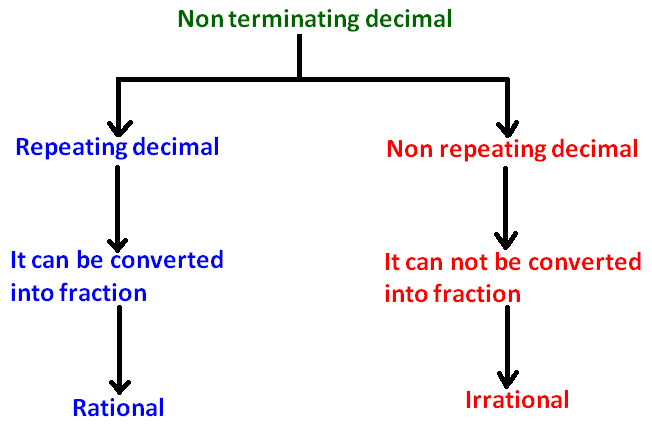
Example :
Rational : 1.2626262626..........(Repeated pattern is 26)
Irrational : 1.4142135623..............(No repeated pattern)
More clearly,
A non terminating decimal which has repeated pattern is called as rational number.
Because, the non terminating decimal which has repeated pattern can be converted into fraction.
A non terminating decimal which does not have repeated pattern is called as irrational number.
Because, the non terminating decimal which does not have repeated pattern can not be converted into fraction.
To have better understanding on difference between rational and irrational numbers, let us come to know about rational numbers and irrational numbers more clearly.
What are rational and irrational numbers ?
First let us come to know, what is rational number. Because, once we understand rational number, we can easily understand irrational number.
A rational number has to be in the form as given below.
Rational Numbers
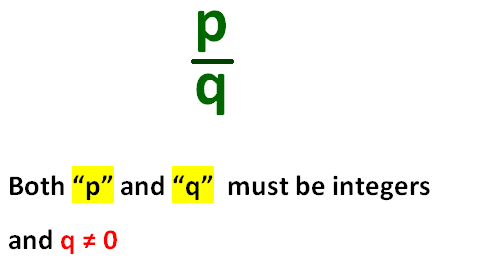
So, any number in the form of fraction can be treated as rational number.
Examples of Rational Number :
5, 2.3, 0.02, 5/6
Because all these numbers can be written as fractions.
5 = 5/1
2.3 = 23/10
0.02 = 2/100 = 1/50
5/6 (This is already a fraction)
Apart from the above examples, sometimes we will have recurring decimals like 1.262626..........
1.262626........ is a non terminating recurring decimal.
All these recurring decimals can be converted to fractions and they are also rational numbers.
Irrational Numbers
A number which can not be converted into fraction is called as irrational numbers.
Examples of Irrational Number :
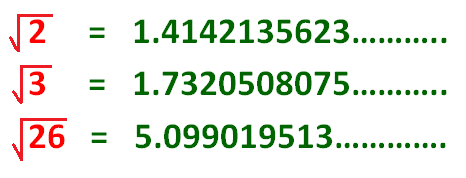
All the above non terminating numbers can not be converted into fractions.
Because, they do not have repeated patterns.
When we are trying to find square of a number which is not a perfect square, we get this non repeating non terminating decimal.
And these non recurring decimals can never be converted to fractions and they are called as irrational numbers.
How to convert non-terminating and repeating decimal to fraction ?
Step 1 :
Let x = 2.0343434...........
Step 2 :
Identify the repeated pattern
In 2.0343434..........., the repeated pattern is 34
(Because 34 is being repeated)
Step 3 :
Identify the first repeated pattern and second repeated pattern as as explained below.
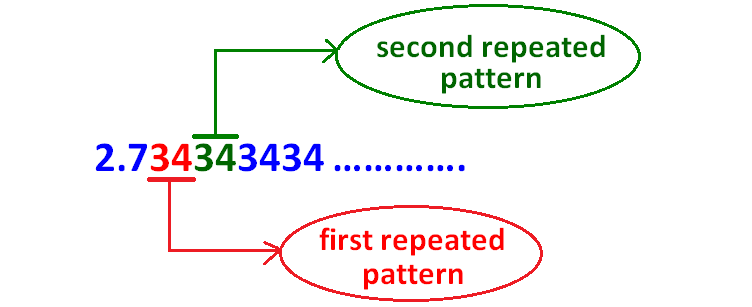
Step 4 :
Count the number of digits between the decimal point and first repeated pattern as given in the picture below.
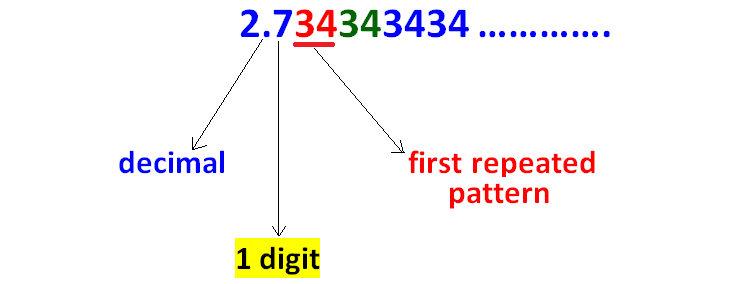
Step 5 :
Since there is 1 digit between the decimal point and the first repeated pattern, we have to multiply the given decimal by 10 as given in the picture below.
(If there are two digits -----------> multiply by 100,
three digits -----------> multiply by 1000 and so on )

Note :
In (1), we have only repeated patterns after the decimal.
Step 6 :
Count the number of digits between the decimal point and second repeated pattern as given in the picture below.
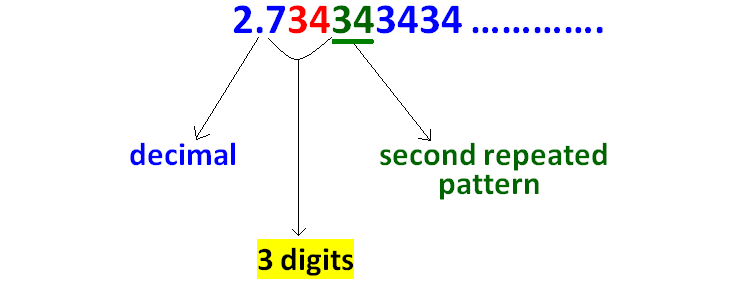
Step 7 :
Since there are 3 digits between the decimal point and the second repeated pattern, we have to multiply the given decimal by 1000 as given in the picture below.

Note :
In (2), we have only repeated patterns after the decimal.
Step 8 :
Now, we have to subtract the result of step 5 from step 7 as given in the picture below.
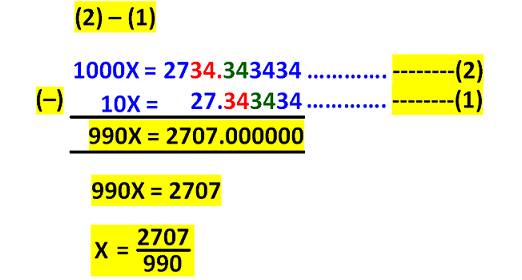
Now we got the fraction which is equal to the given decimal.

Because the given non-terminating and recurring decimal can be written as a fraction, it is considered to be a rational number.
Subscribe to our ▶️ YouTube channel 🔴 for the latest videos, updates, and tips.
Kindly mail your feedback to v4formath@gmail.com
We always appreciate your feedback.
About Us | Contact Us | Privacy Policy
©All rights reserved. onlinemath4all.com

Recent Articles
-
10 Hard SAT Math Questions (Part - 43)
Jan 04, 26 01:38 AM
10 Hard SAT Math Questions (Part - 43) -
90 Degree Clockwise Rotation
Jan 01, 26 06:58 AM
90 Degree Clockwise Rotation - Rule - Examples with step by step explanation -
US Common Core K-12 Curriculum Algebra Solving Systems of Equations
Jan 01, 26 04:51 AM
US Common Core K-12 Curriculum - Algebra : Solving Systems of Linear Equations
